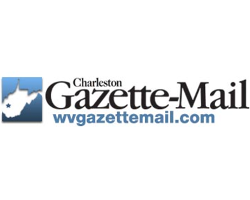West Virginia Department of Environmental Protection Official Urges Congress to Renew Abandoned Mine Lands Program

By Ken Ward, Jr.
June 11, 2017 - A federal coal production tax that funds the cleanup of abandoned mines doesn’t expire until late 2021, but advocates for the Abandoned Mine Lands program are urging lawmakers to start work on legislation to renew the funding mechanism.
Among those pushing for congressional action is Rob Rice, the director of the West Virginia Department of Environmental Protection’s Office of Abandoned Mine Lands and Reclamation. Rice testified last week to a House Natural Resources subcommittee that is looking into recent issues about the AML program.
“Without reauthorization, an unacceptable amount of AML work will remain undone,” Rice told the Energy and Mineral Resources subcommittee. “Mine hazards will fester and unforeseen AML emergencies will continue to occur, risking property damage, injury and death for local citizens.”
Rice added, “The deep environmental impacts and visible scars on the lands and watersheds so loved by citizens of and visitors to historic coal country will go unrepaired.”
Rice told subcommittee members the federal Office of Surface Mining Reclamation and Enforcement projects $9.2 billion in construction costs for AML sites remain nationwide. Based on expected AML tax collections through 2021 — when the program expires — and the amount currently in the AML fund, federal officials project $2.2 billion in AML money will be distributed for cleanup projects.
“That represents only 24 percent of what is needed — and means that without reauthorization of the AML fee, over $7 billion in construction costs for AML-impacted lands and waters will remain,” Rice said.
Rice cautioned, “Legislative deliberations of this scale take a significant amount of time,” noting the 2006 reauthorization took more than 10 years to complete. That reauthorization effort was led by Sen. Robert C. Byrd and Rep. Nick Rahall, both D-W.Va. and both senior members of key congressional committees at the time.
Any discussion of the reauthorization of the AML program is likely to focus at least in part on efforts to rework parts of it so money can be more easily used to help create a more diverse economy in coalfield communities in conjunction with actual mine cleanup work. The Trump administration’s proposed budget for next year, though, would cut funding for a pilot program aimed at those goals.
Lawmakers are also reviewing an Interior Department inspector general’s report that warned OSM was not properly ensuring some states — primarily Wyoming — that previously certified they had cleaned up all of their pre-1977 coal mines were using AML money for non-coal reclamation and other unrelated projects. The inspector general’s report mirrored the findings of a Charleston Gazette series that examined the AML program’s spending more than a decade ago.
Hal Quinn, president of the National Mining Association, testified last week that of the $8.5 billion that has been spent from the AML program, only $2.8 billion has been used for “high priority” and “low priority” cleanups.
“That $5.7 billion gap between spending and actual reclamation of priority coal AMLs reveal that only one of every $3 has reached the priority coal projects they were intended to remediate,” Quinn said.
Quinn said it’s time to view the current AML fee expiration date in 2021 as “firm” and to begin redistributing the remaining AML money to the program’s core mission.
“Frankly the program has too many separate buckets competing for money to use for purposes outside the program’s core mission,” Quinn told lawmakers. “These issues are not new, they have been well known for decades.”
In 1977, Congress created the AML program when it passed the Surface Mining Control and Reclamation Act. The program taxes each ton of coal mined nationwide — 28 cents per ton for surface mining and 12 cents per ton for underground mining — to reclaim land and water damaged by coal mining that took place prior to passage of the federal law. The idea was to have the more modern industry pay to clean up sites that were mined before new environmental protection and reclamation standards were mandated by law.
“The coal mining communities that supported the coal industry and fueled our country’s development have been paid back with scarred land and polluted water that are well beyond their means to fix,” Rice said. “This funding is critical in protecting and restoring the health of our citizens and their environment. And, in an era of increasing economic hardship for these communities all throughout the country, this work has become more important than ever.”
Rice told lawmakers that the current OSM inventory of AML sites greatly underestimates the need for cleanup money in West Virginia. The inventory lists $1.21 million in cleanups needed, but Rice said West Virginia’s “own, more accurate and inclusive inventory” of the remaining sites puts the remaining cost at closer to $4.5 billion.

